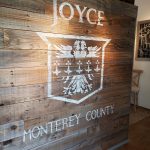 Carmel-by-the-Sea, on the south side of the Monterey Peninsula, is a bucket-list bullet point. A stroll along Ocean Avenue with its destination shopping, art galleries, fine dining, and legendary cuteness are a must-see if you’re visiting the coast south of San Francisco.
Carmel-by-the-Sea, on the south side of the Monterey Peninsula, is a bucket-list bullet point. A stroll along Ocean Avenue with its destination shopping, art galleries, fine dining, and legendary cuteness are a must-see if you’re visiting the coast south of San Francisco.
But just ten miles east is the seldom-visited wine destination of Carmel Valley Village. Up the narrow Carmel River Valley there’s a clutch of laid-back winery tasting rooms, a few posh resorts, and plenty of good restaurants mixed in with family farms and a holdover 60s hippie vibe.
Some vineyards line the road while others cling to the steep sides of the Coastal Range, dotting the dusty landscape with patches of green. The geography creates diverse growing options for vintners, but not much space. There are just 300 acres of vines in the appellation (Napa has 43,000).
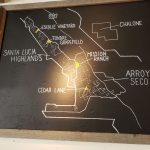 Fortunately, just inland are some of the best cool-climate Pinot Noir and Chardonnay vineyards in America — the Santa Lucia Highlands and Arroyo Seco. The diversity makes for an exciting mix of wines in the local tasting rooms.
Fortunately, just inland are some of the best cool-climate Pinot Noir and Chardonnay vineyards in America — the Santa Lucia Highlands and Arroyo Seco. The diversity makes for an exciting mix of wines in the local tasting rooms.
Russell Joyce, owner/winemaker at the Joyce Wine Company, is adept at sourcing fruit from those vineyards. He still makes Cabernet from his family’s five-acre Carmel Valley hillside parcel. But the majority of his production comes from acreage on the other side of the mountains.
Known for his expressive single-vineyard Pinot Noirs, he also makes white wines including Riesling, Albarino, Chardonnay, Chenin Blanc along with a Grenâche-Syrah blend, Syrah, and Merlot — a total of roughly 8,000 cases annually.
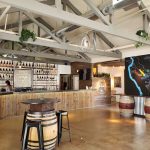 The Joyce tasting room, in a mixed retail cluster including stores and restaurants, is typical of Carmel Valley Village. A vintage Chevrolet farm truck with a load of wine barrels points toward the entrance.
The Joyce tasting room, in a mixed retail cluster including stores and restaurants, is typical of Carmel Valley Village. A vintage Chevrolet farm truck with a load of wine barrels points toward the entrance.
Ari Jimenez, Operations Manager at Joyce, guided us through a flight of wines that included four whites, a refreshing rosé, and five reds.
Under the Joyce label, Russell makes terroir-driven wines with a minimum of intervention under the motto, “Old vines, honest farming, transparent winemaking.” The result is French-style wines with lower alcohol, balanced acidity, and little or no oak influence — delicious, food-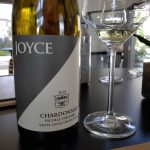 friendly wines.
friendly wines.
Our tasting started with a lean, bright, pear-inflected Alberino from Arroyo Seco ($24) and then moved on to a show-stopping Burgundian-style Escolle Vineyard Chardonnay (35) from the Santa Lucia Highlands. An appealing Grenâche-Mourvèdre rosé (24) was my favorite for everyday imbibing. “We’re just about out of it,” Ari told us.
Submarine Canyon, the name of Joyce’s flagship Pinot Noir (24), refers to the underwater trench in Monterey Bay that brings up cold Pacific water to cool the air over the vineyards. It’s a well-reviewed, three-vineyard blend that is a tasting room staff favorite.
 Two single-vineyard Pinot Noirs followed. From the Gabilan vineyard (45), the pale wine was bright and juicy — Ari’s favorite. The Escolle Vineyard wine (45), on the other hand, displayed elegance, soft tannins, and finesse.
Two single-vineyard Pinot Noirs followed. From the Gabilan vineyard (45), the pale wine was bright and juicy — Ari’s favorite. The Escolle Vineyard wine (45), on the other hand, displayed elegance, soft tannins, and finesse.
There is also the Russell Joyce Collection label — wines made with a little more (but not too much) winemaker intervention and blending that creates the desired flavor profile. A dry, mineral Alsatian-style Riesling (24) was a favorite in our group. Chenin Blanc (35), a rising variety in California, had a honey aroma and crisp finish, ideal for seafood. Grenâche and Syrah (38) were blended for a hearty, tannic, red-meat wine.
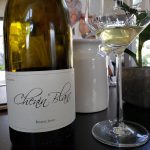 As we settled up, Ari encouraged us to try one more — a limited edition Eden Rift Valley Pinot Noir available to Wine Club members only. Joining the club is a good idea. Joyce wines are not distributed in Connecticut, but they do ship and the member discount is significant.
As we settled up, Ari encouraged us to try one more — a limited edition Eden Rift Valley Pinot Noir available to Wine Club members only. Joining the club is a good idea. Joyce wines are not distributed in Connecticut, but they do ship and the member discount is significant.
Traveling beyond the international destination of Carmel-by-the-Sea led us to the Carmel Valley for an off-the-beaten path experience. It’s a little out of the way, but worth it.
Frank Whitman can be reached at NotBreadAloneFW@gmail.com.
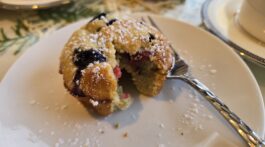








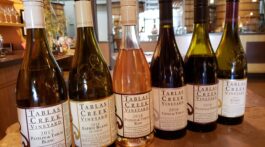

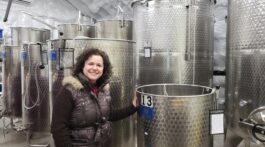
Lovely article. The Carmel Valley is so beautiful. We’re here this week, and enjoyed a nice bottle of Joyce Pinot Noir last night.